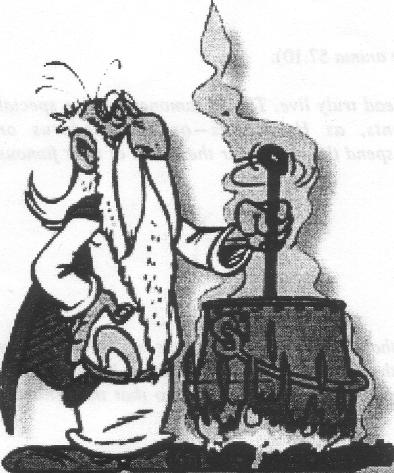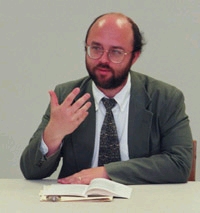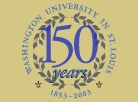Handout- Page 1

Handout - Page 2

Handout - Page 4

I arrived early for the reception in the Library
Atrium at Marymount University and met Dr. Chris Snyder, the
host for Marymount and Dr. Philip Freeman, the lecturer. I found
him to be open, friendly, articulate and informed about Celtic matters.
It turns out that Dr. Freeman is from a family that lives in Mississippi
one lake south of where my parents (also live on a lake). In fact, their
lake is actually named for a member of his family. It's a small world. I
discussed attending their seminar at the Smithsonian on Saturday and
will have to check my membership to see if it is still up to date as
this could cut the $120 ticket price significantly. Dr. Freeman and I
briefly discussed his upcoming book on St. Patrick. I said that (and he
agreed) that Patrick must have been quite an individual to have
converted the Irish to Christianity from Paganism (the whole story is of
course much more complicated and certainly not a finished process:-)
The lecture began promptly at 7:30 PM. with Dr. Freeman being ably
introduced by Dr. Snyder (whose interest is Arthurian matters). A seven
page handout was circulated that contained (according to Dr. Freeman)
all that is safely known about the Druids from Classical sources. I
asked for and received permission to scan this handout which I will be
placing in the Summerlands Public Library. It has some interesting
renditions/translations of Gaulish spells in it. The list and lecture
followed a chronology on the Druids and Celtic culture from about 1000
BCE up to about the 8th century CE. It ranged across Europe from Greek
and Roman encounters with the Druids all the way to Ireland where the
last organized group of Druids survived almost 800 years longer than on
the continent of Europe.
Dr. Freeman correctly identified the Druids as both a priesthood of
Celtic religion and a class within the structures of Celtic society. He
discussed briefly the education and types of people who were in these
classes. One of his remarks seemed to indicate that many more Druids
were women than had been previously though. I think I'll be purchasing
his book on the topic which is _War, Women, and Druids, Eyewitness
Reports and Early Accounts of the Ancient Celts_. Dr. Patrick Ford has
this to say about Freeman's treatment of the topic:
"I know of no other work that pulls this sort of material together and
groups it by such helpful categories (war, feasting, poetry, religion,
women, etc.). I will certainly value it in my library and... as
recommended reading for several of my courses. It will be a nice
companion to Freeman's Ireland and the Classical World."
-Patrick K. Ford, Professor and Chair of Celtic Languages and Literatures, Harvard University
Each of the items in the handout suggests some tantalizing things about
the Druids but unfortunately, the information is far from complete.
Dr.Freeman did acknowledge that the insular sources extend this
continental knowledge of Druids. One interesting aspect of the talk
which was accompanied by slides was that the Druid center of the
Carnutes is possibly where the present day Cathedral of Chartres is
located. It was said in the lecture that this was a common practice of
Christianity to co-opt the sacred sites of other religions. Regarding
Stonehenge, it was said that the Druids most probably did not build the
monument but could probably have used it. Dr. Freeman noted that such
sites in Ireland were thoroughly integrated in the Pagan mythos and
practices.
The early part of his talk about Druids specifically discussed human
sacrifice among the Celts. Two things were emphasized:
1. Human sacrifice was most probably not a frequent occurrence among the
Celts.
2. The Romans forbade it by the Druids mainly because they wanted to
have the say in all matters of life and death within their domains. This
was given as a likely reason why the Romans persecuted the Druids under
the emperors Tiberius and Claudius.
The lecture closed with a question and answer session where Dr. Freeman
noted that the Druids persisted in Ireland as a legally recognized group
until the 6th century CE. After that (in response to a question from
me), he agreed that the Filidh and the Bards took on some of the
functions of the Druids in Celtic societies. An example of the
continuing Pagan practices of the Filidh given by Dr. Freeman was the
practice of Imbas Forosnai wherein the File chews dog meat and makes
incantations to have prophetic visions and dreams.
I had some brief informal discussion with Dr. Freeman following the
lecture and he departed for another scheduled event with Dr. Snyder. I
got to me some of the Paganfolk and Druids who had come to the event
from out of town (especially fellow Keltrian Druid Tracey). She and I
discussed the lecture a bit and I made a copy of the handout for her on
the Marymount Library's copy machine.
The lecture notes are indexed in the links on the left of this page.
I'll also post a brief review on the weekend seminar if I attend and
there is interest hereabouts.
Here's links to some of Dr. Philip Freeman's books:
http://www.utexas.edu/utpress/books/frewar.html
http://www.utexas.edu/utpress/books/freire.html
http://www.mellenpress.com/mellenpress.cfm?bookid=4481&pc=9
Searles

The Druids, A Lecture Given at
Maramount University

by Dr. Philip Freeman
This lecture was based on a collection of Classical references to
the Druids with some additional material from the Irish sources.

Washington University
This is where Dr. Freeman is Associate Professor of Classics




